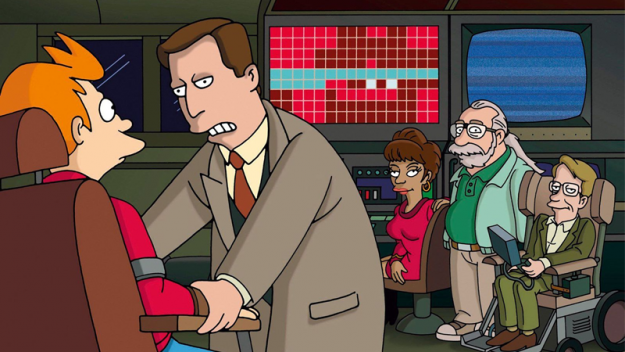The renowned British scientist Stephen Hawking, died at age of 76 in the early hours of Wednesday. An Oscar-nominated biographical film The Theory of Everything released in 2014 documented his life.
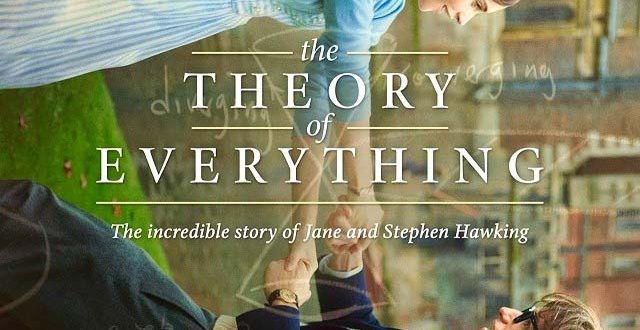
This film was adapted on the Memoirs of his first wife Jane, telling the story of the romance between the pair after they first met at Cambridge University.
The story begins in 1963, with a 21 year-old skinny student behind thick-rimmed glasses, cycling through Cambridge’s campus. Steven Hawking is on his way to attend the most important party of his life. There, he is about to meet his life-loving Jane Wilde.

“Hello.”
“Hello.”
“Science?”
“Art.”
These were the awkward introductions of a physics graduate student fascinated about cosmology, and an art professional devoted to the Church of England. They were drawn to each other by the difference and sense of mystery. A fascinating love at first sight.
However, the good times were cruelly cut short. Hawking was soon diagnosed with Amyotrophic Lateral Sclerosis (ALS) and the doctor give him a life expectancy of just two years. Hawking collapsed completely, and in his memoir he described his former self as “somewhat of a tragic character”. Conversely, Jane was determined to fight the illness with him, and they got married.
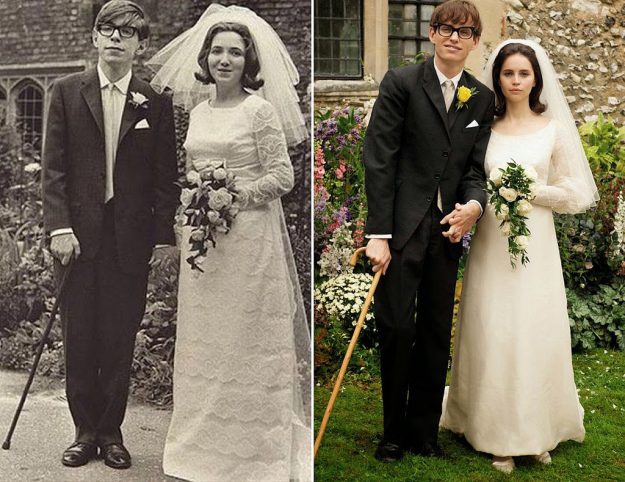
After the marriage, Hawking’s physical condition deteriorated, the director used successive scenes to chart his horrifying decline: spilling things, falling over frequently, walking with sticks, becoming wheelchair-bound, and relying on a voice synthesiser to communicate.
But his enthusiasm for universe and tireless love and care from Jane and the family motivated him to make the time he had count. He was awarded his doctorate in 1966 and made his great academic contribution to the development of physics and cosmology later.
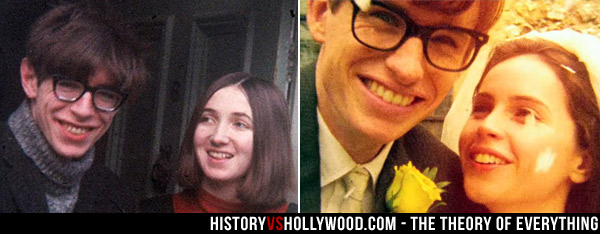
Life is not an ideal model, as the time passed, the passion between them disappeared, and more and more contradictions emerged. As Hawking’s thinking gallops in the history of the universe and time, Jane’s world shrinks into the walls of the room. As Hawking’s achievements and fame grew, his physical condition was worsening, and life became more and more stressed and exhausting for Jane. But she never gave up.
I would rather see this movie as a love movie than a biopic. As the director himself says “It’s a portrait of the relationship between Stephen and Jane. It was her perspective and her strong female voice that drew me to the film. ”
In the movie, he has been persistently looking for the theory that explains everything. And life of the character himself seem to be an accessible explanation of the theory of everthing.
The difference between them attracted them at first but eventually dragged them apart. Just like the metaphor of peas and potatoes in the film, the couple are trying to reconcile two different sets of world views and values. Sometimes this kind of compromise is very easy, like the reconciliation of Maxwell’s equations with special relativity. Sometimes it will be hard, like quantum field theory and gravitation theory.
All of these placed unimaginable strains on their 30-year marriage. Eventually Jane fell in love with a choir director, and Hawking he grows close to one of his nurses. The couple separates from each other in the end.
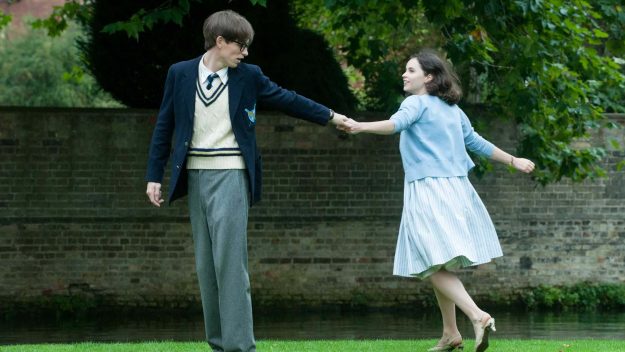
As a work of art, it has rearranged the fact to certain dramatic conventions. But the performance of Eddie Redmayne and Felicity Jones manages to bring this great mind slightly accessible to us. Redmayne’s performance delicately grasped the details of how Hawking gradually loses mobility. In the end Eddie Redmayne can only rely on eyes and facial muscles to act the character’s thoughts and emotions.
According the Telegraph, Redmayne recalled the scene he met Hawking, and he said Hawking was “so nice” after viewing the film.
The scientist wrote in a post on his Facebook page “I thought Eddie Redmayne portrayed me very well in The Theory of Everything Movie…He spent time with ALS sufferers so he could be authentic. At times, I thought he was me.”
The man who changed the way how we look at the universe passed away. But his courage in facing both death and the future will be remembered on screen.
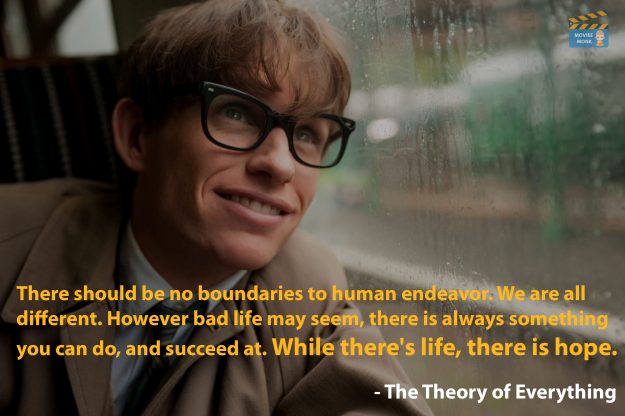
Here are just a few off the cameo appearances that Steven Hawking himself made during his life:
Star Trek
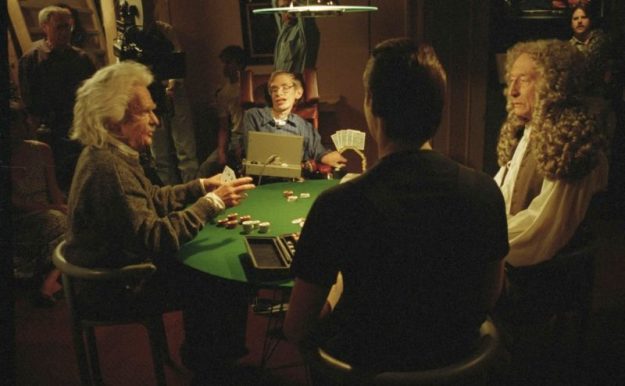
In 1992, Stephen Hawking appeared as himself in the movie and played poker with Newton and Einstein.
The Simpsons
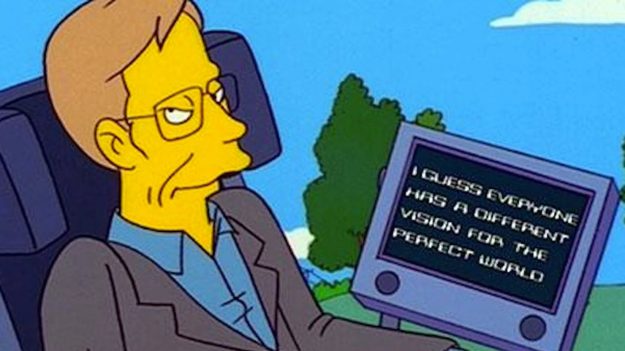
The scientist appeared in the cartoon four times. He once noted that “as many people know me through The Simpsons as for my science”.
S10 E22: They Saved Lisa’s Brain,
S16 E16: Don’t Fear the Roofer,
S18 E20: Stop or My Dog Will Shoot
S22 E01: Elementary School Musical
The Big Bang Theory S05 E21
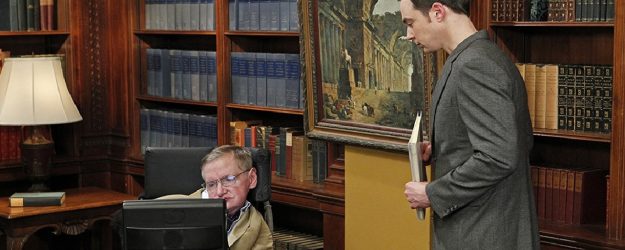
Professor Hawing appeared as an guest professor at the University where Sheldon studies. He reviewed Sheldon’s paper on the Higgs boson, noting: “You made an arithmetic mistake on page two. It was quite the boner.”
FUTURAMA
Hawking once said he loved Futurama more than George Takei, and he appeared in the show twice. In the episode “Anthology of Interest”, he plays a theoretical physicist as well as one of the Al Gore’s Action Rangers.
Alien Planet
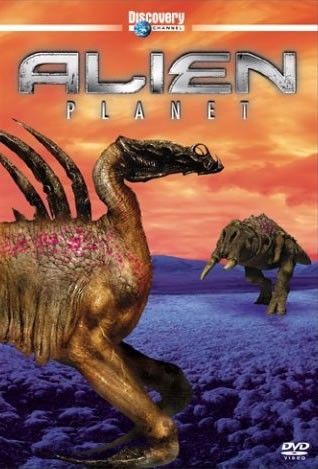
Scientists from NASA and the British biological community worked together to search for alien life on the fictional planet in the film.
Into the Universe with Stephen Hawking
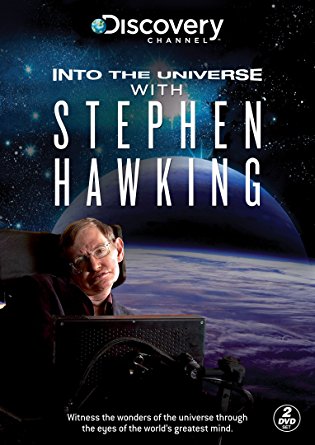
This is a 2010 science documentary television mini-series written by British physicist Stephen Hawking. It took more than three years to produce, during which time Hawking made several changes to the script. He hopes to produce a program that can both entertain the public and scientific community.

